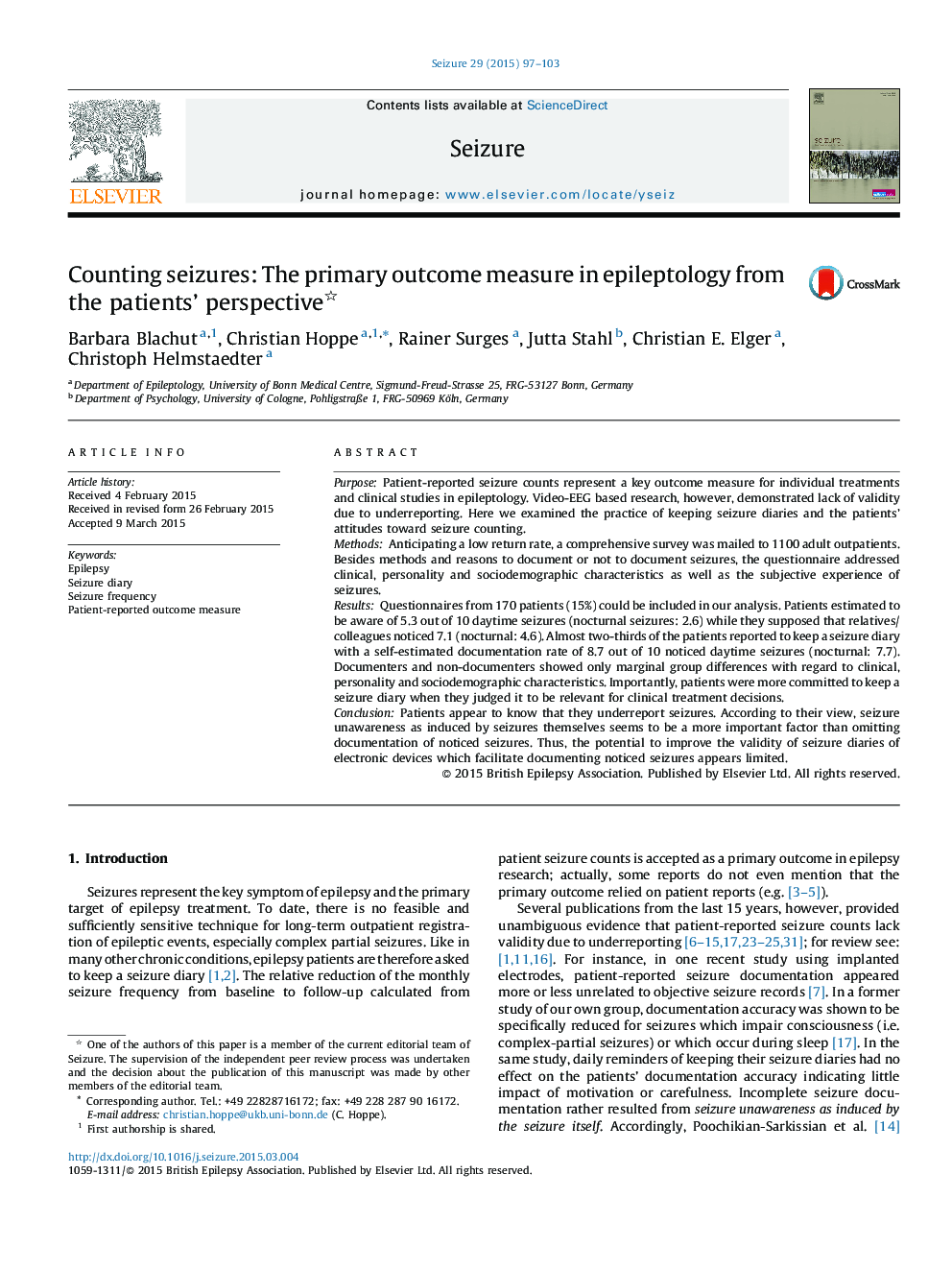| کد مقاله | کد نشریه | سال انتشار | مقاله انگلیسی | نسخه تمام متن |
|---|---|---|---|---|
| 342346 | 548812 | 2015 | 7 صفحه PDF | دانلود رایگان |
• Video-EEG based studies showed that patients underreport seizures.
• Patients may be aware of their poor documentation of seizures, possibly due to seizure-induced unawareness.
• On average, patients believe to be aware of about 60% of their daytime seizures.
• Omitting documentation of noticed seizures is a minor problem.
PurposePatient-reported seizure counts represent a key outcome measure for individual treatments and clinical studies in epileptology. Video-EEG based research, however, demonstrated lack of validity due to underreporting. Here we examined the practice of keeping seizure diaries and the patients’ attitudes toward seizure counting.MethodsAnticipating a low return rate, a comprehensive survey was mailed to 1100 adult outpatients. Besides methods and reasons to document or not to document seizures, the questionnaire addressed clinical, personality and sociodemographic characteristics as well as the subjective experience of seizures.ResultsQuestionnaires from 170 patients (15%) could be included in our analysis. Patients estimated to be aware of 5.3 out of 10 daytime seizures (nocturnal seizures: 2.6) while they supposed that relatives/colleagues noticed 7.1 (nocturnal: 4.6). Almost two-thirds of the patients reported to keep a seizure diary with a self-estimated documentation rate of 8.7 out of 10 noticed daytime seizures (nocturnal: 7.7). Documenters and non-documenters showed only marginal group differences with regard to clinical, personality and sociodemographic characteristics. Importantly, patients were more committed to keep a seizure diary when they judged it to be relevant for clinical treatment decisions.ConclusionPatients appear to know that they underreport seizures. According to their view, seizure unawareness as induced by seizures themselves seems to be a more important factor than omitting documentation of noticed seizures. Thus, the potential to improve the validity of seizure diaries of electronic devices which facilitate documenting noticed seizures appears limited.
Rates of reporting and underreporting seizures. Shown are the estimated percentages of unnoticed, noticed but not documented, and documented daytime and nocturnal seizures. Percentages are given separately for daytime and nocturnal seizures (dotted line); the percentages of daytime versus nocturnal seizures were derived from Hoppe et al. [17]. For rates of seizure documentation 95% confidence intervals are given (square brackets). The overall rate of underreporting was about 50% of all seizures (solid line). Of note, these estimates represent subjective patient evaluations.Figure optionsDownload high-quality image (132 K)Download as PowerPoint slide
Journal: Seizure - Volume 29, July 2015, Pages 97–103
